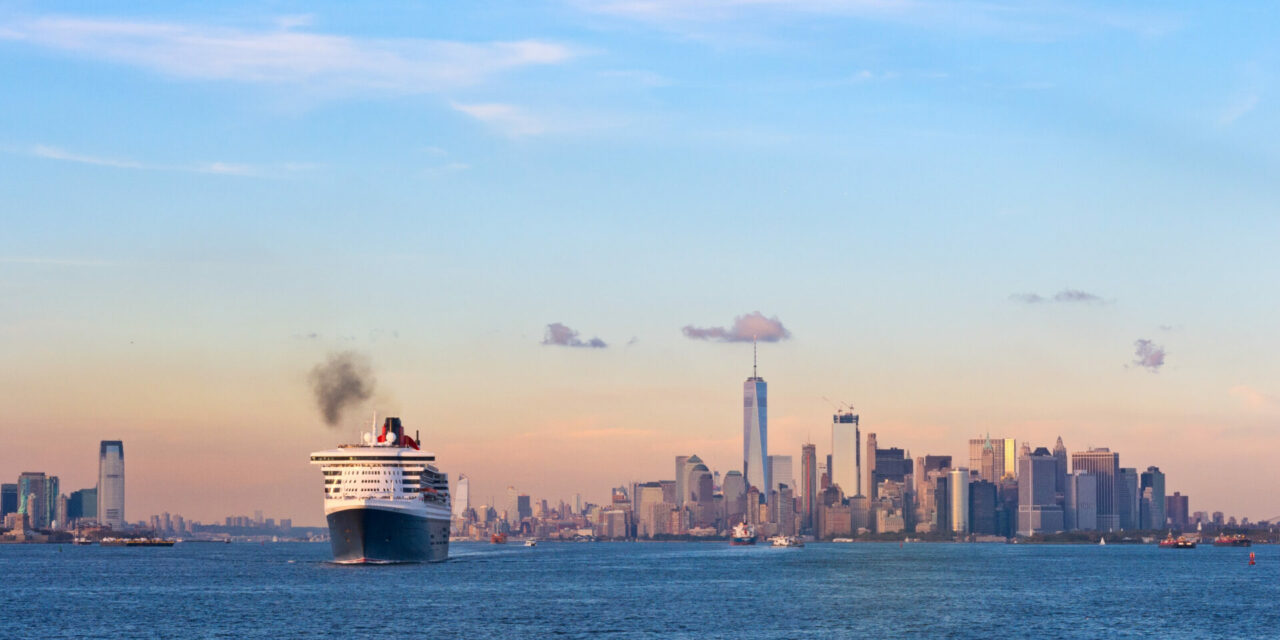A Transatlantic cruise is quite unlike any other type of cruise holiday. With more days at sea and fewer port stops, the cruise experience becomes more about the ship and what you do onboard than the destinations you visit.
If you are planning a Transatlantic luxury cruise, we’ve put together an all-you-need-to-know guide. From looking at Transatlantic cruise routes to what to expect on a Transatlantic cruise and what a Transatlantic cruise costs, we’ll share answers to many of the questions we receive about this unique type of holiday.
What is a Transatlantic cruise?
A Transatlantic cruise is a cruise that sails across the Atlantic Ocean, and there are two main types:
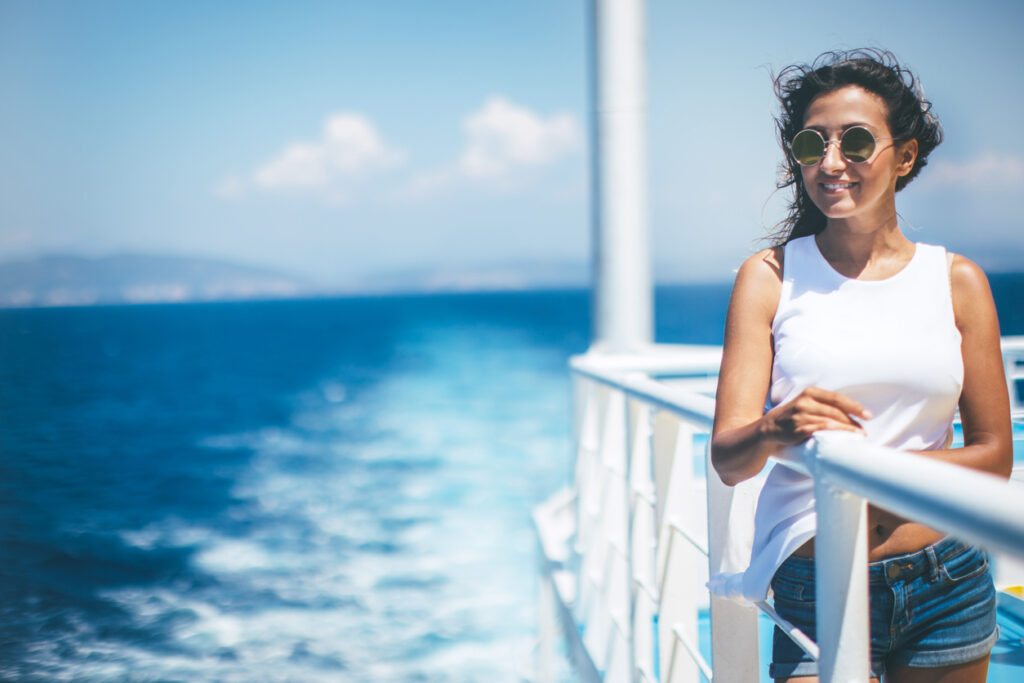
Typically, a Transatlantic cruise is a repositioning cruise, which is simply the term used when cruise lines want to move their ships from Europe to America or vice versa. These Transatlantic repositioning cruises commonly occur at the end of the season in that specific area, normally spring or autumn.
There are also Transatlantic luxury cruises that are not repositioning cruises but sail across the Atlantic to offer their customers an iconic experience. The most famous cruise line that offers this type of Transatlantic cruise is Cunard Cruises.
Are Transatlantic cruises round trip?
When looking at how Transatlantic cruises work when cruise lines want to move their ship one way from one area of the world to another, the key point is that most of these Transatlantic cruises do not bring you back. This means you will need to pay for a separate one-way flight home.
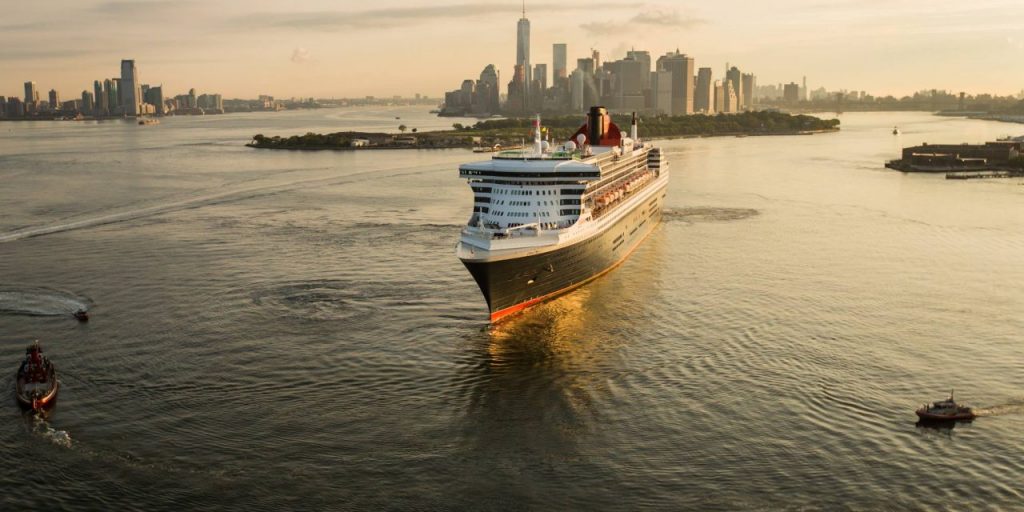
Non-repositioning Transatlantic cruises like Cunard’s, for example, offer Transatlantic round-trip cruises alongside those that only go east or west-bound.
How long does a Transatlantic cruise take?
Like most cruise itineraries, there is variation in how long a Transatlantic cruise takes. Sailing across the Atlantic on a cruise ship usually requires around a week, give or take a couple of days.
However, the entire Transatlantic cruise duration is usually more prolonged, as cruise lines add a few port stops at various destinations.
What are the itinerary options for Transatlantic cruises?

When it comes to routes, there are three Transatlantic cruise options: North Atlantic, Mid-Atlantic and South Atlantic.
The North Atlantic route is the classic option, sailing from the UK to New York or vice versa. Occasionally, you will also come across a north Transatlantic cruise route that sails between Iceland and North America or Canada.
On these Transatlantic cruises, the weather may be more temperamental, with more turbulent seas in this part of the Atlantic Ocean. So, if you are travelling during the shoulder season, add an extra layer to your Transatlantic cruise packing list.
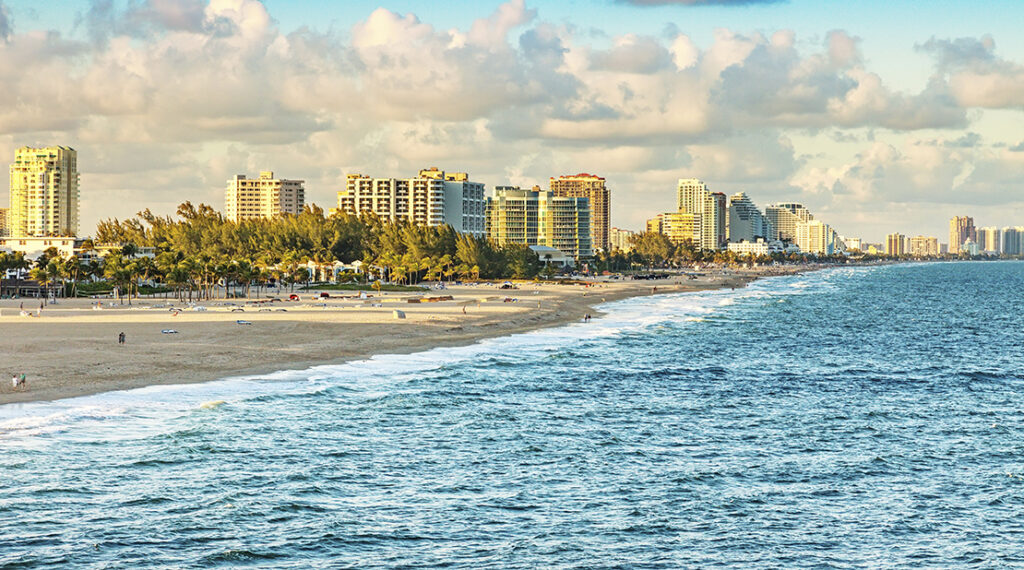
Mid-Atlantic routes sail from the Mediterranean to southern parts of the USA, such as Florida and the Caribbean. Being further south on these Transatlantic cruises, you will find the weather is milder and more settled. Even for Transatlantic cruises in October, the weather can be good enough to sit on the deck and enjoy the facilities outside.
South Atlantic routes are less common. These are Transatlantic cruises that sail between Africa and South America. An example itinerary would be starting in Cape Town, South Africa, stopping in Walvis Bay, Namibia and Jamestown on the island of St. Helena, before finishing in Rio de Janeiro, Brazil.
How much does a Transatlantic cruise cost?

You can find some excellent Transatlantic cruise deals, sometimes as much as 50% off, as cruise lines are keen to fill their ships for these repositioning sailings. With more days at sea, you’ll also find Transatlantic cruises cheaper than many traditional itineraries.
However, when considering whether a Transatlantic cruise is worth it, remember to factor in the cost of the flight and the transfers needed to get back.
Which cruise lines offer Transatlantic cruises?
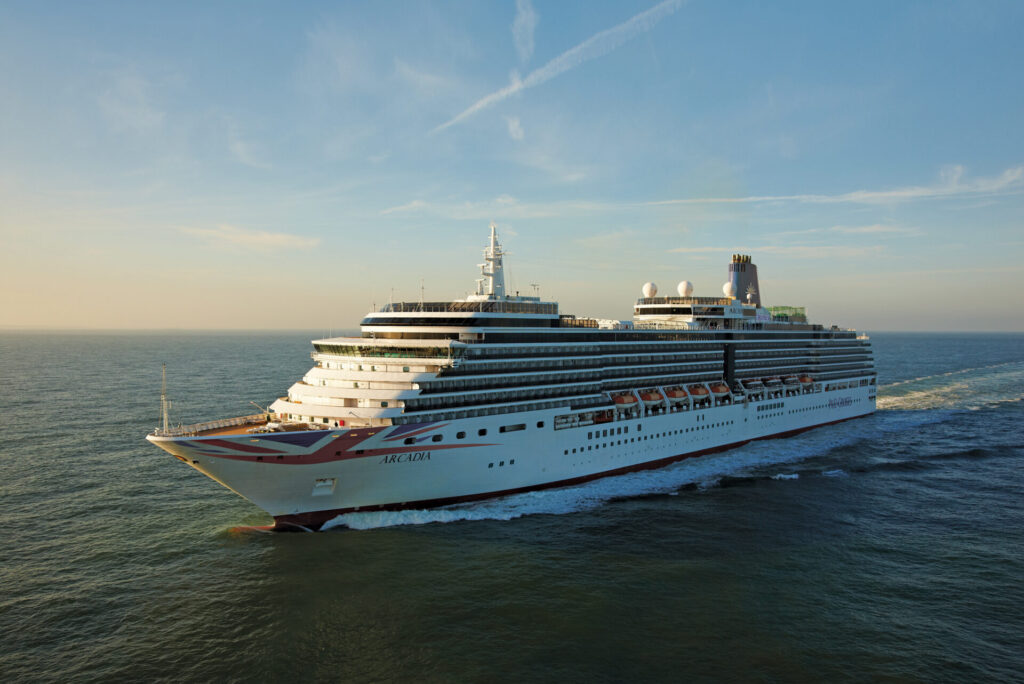
Most leading cruise lines offer repositioning cruises between the UK and America. For example, you’ll find Transatlantic cruises with Carnival, Celebrity Cruises, Cunard, Disney, MSC, P&O and Royal Caribbean, to name a few.
What to expect on a Transatlantic cruise
Will I get bored?
On a Transatlantic cruise, you will spend many more consecutive days at sea, often around 6 to 7. If you love sea days, this will be great news for you. Others may worry about becoming bored during this time and be wondering what to do on a Transatlantic cruise.

Cruise lines also realise that Transatlantic cruises include long periods at sea, and, therefore, most up their efforts around the entertainment and activities they offer.
On most Transatlantic cruise ships, you’ll find everything from spectacular live performances to enrichment lectures and presentations, classes from cooking to computers, golf to painting and, of course, incredible dining opportunities.
However, even with all the additional activities, we recommend bringing some entertainment of your own, whether it’s a couple of extra books to read or games to play.
What to wear on a Transatlantic cruise
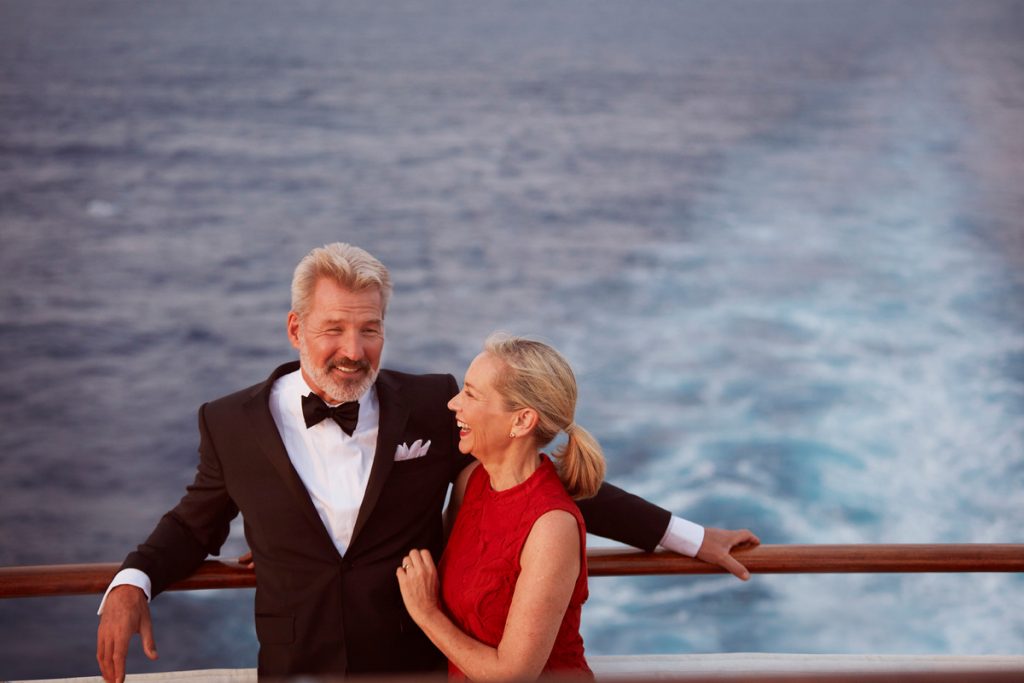
It can be tricky to decide what to pack for a Transatlantic cruise, as temperatures and weather can vary from the coast to the middle of the ocean. So, when creating your Transatlantic cruise packing list, our best advice is to be prepared.
Bring a few warm layers, particularly if you are travelling on the north Transatlantic cruise route early or late in the season. And don’t forget some formalwear for evenings, particularly if you are travelling on a Transatlantic luxury cruise, such as Cunard’s.
Seasickness
If you’ve been prone to seasickness before on a cruise, you are more likely to experience it on a Transatlantic cruise too. Even those who haven’t felt seasick before could suffer from it when crossing the Atlantic, as the seas can be rougher.

To avoid it, book midship cabins where there is less motion and consider taking seasickness medication or wearing bands or patches.
Cabin location
When booking a Transatlantic cruise, cabin location can be even more significant, especially whether you choose port or starboard.
If you are sailing eastwards and have a balcony or ocean view room, the starboard side is best if you are seeking out the sun. On the contrary, opt for the port side for more sun when sailing westwards.
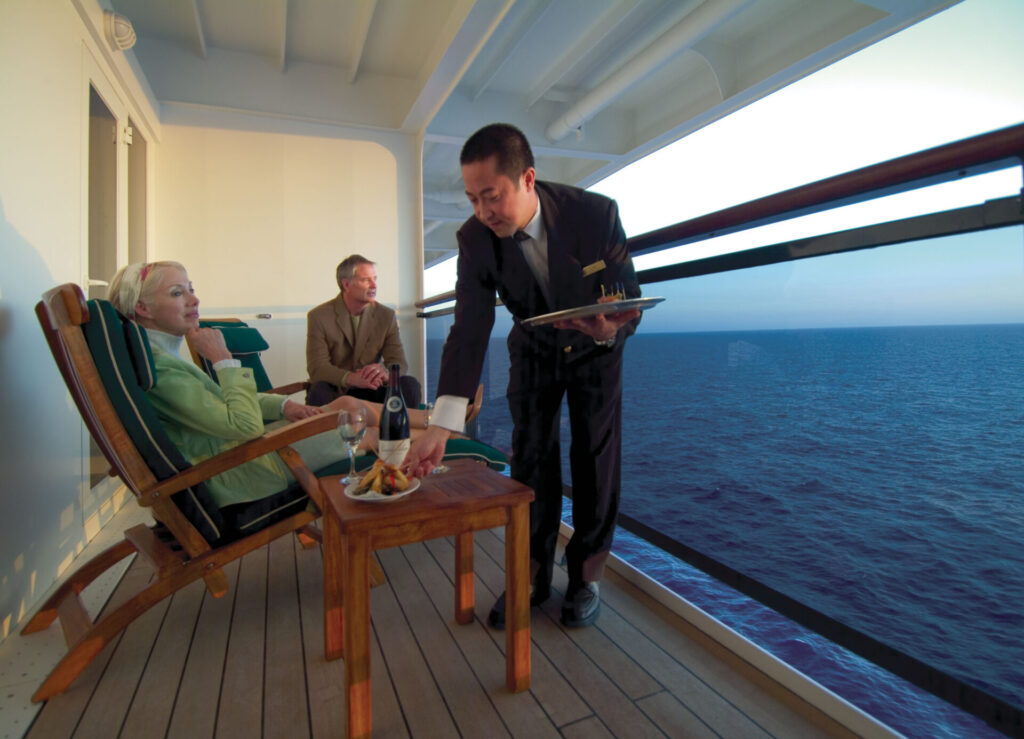
However, remember that the sun’s angle will vary throughout the year, which will also affect how much of its direct light you get.
If you are considering a balcony room, this could be the cruise to do it on. With some incredible Transatlantic cruise deals leaving you with more budget, why not indulge in having a space of your own, where you can sit back and enjoy views of the wide-open ocean.
Lack of jet lag
Another excellent advantage of a Transatlantic cruise is you won’t suffer from jet lag when you arrive. Instead, you’ll get there feeling relaxed, refreshed and ready to explore, which brings us to our next point…
Booking a Transatlantic cruise and stay

Of course, after a long journey, even a relaxed Transatlantic cruise, it is nice to stay in your destination for a while. Many cruise lines and cruise tour operators offer some fantastic Transatlantic cruise and stay deals. Some even include the sailing back too.
For example, you could enjoy a seven-night, non-stop crossing from Southampton to New York, then enjoy a few days shopping and exploring the city before catching a return flight or sailing back.
There are several pros and cons of Transatlantic cruises when deciding whether to book. While you’ll find some amazing Transatlantic cruise deals on ships that will offer fantastic entertainment, the extended time at sea is not for everyone, and the logistics of booking return travel do deter some people.


